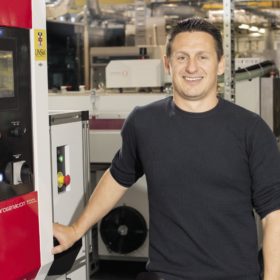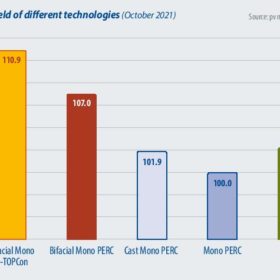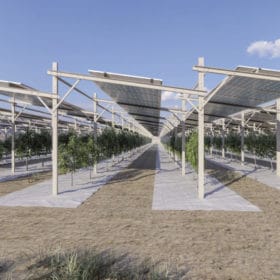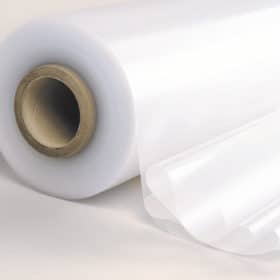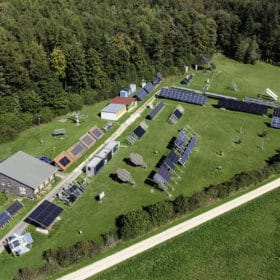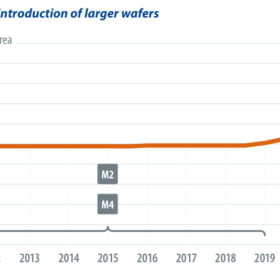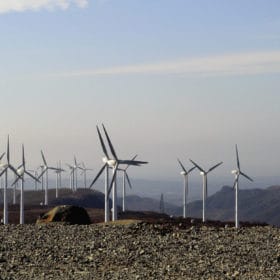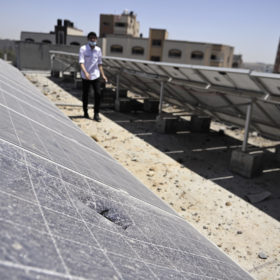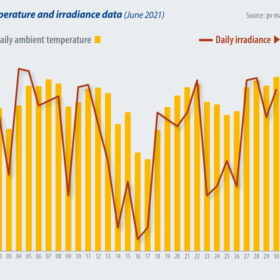Cloud looms over PV’s silver lining
Should heterojunction solar technologies be temporarily shelved? Could copper plating replace screen-printed silver conductive surfaces in cells? Why are tandem cells a likely successor to PERC? Brett Hallam recently sat down with Natalie Filatoff in Sydney to explain the findings of a new study by UNSW that sought to answer these controversial questions.
pv magazine test: October 2021 results
As detailed in the October edition, the pv magazine test rooftop PV installation was reconfigured to ensure more accurate tracking of the high-power, high-current modules using microinverters. George Touloupas, senior director of technology and quality at CEA, discusses additional modifications to accommodate high currents on the rooftop, and presents the first results from the newly configured array.
Orchardvoltaics – it’s just ripe
How do you feed a growing population with limited agricultural space, and ensure that the global trend of smashed avocado toast lives on? In Israel, Doral Energy is facing this question head on with its innovative agri-PV concept, ‘orchardvoltaics’, which purportedly boosts farmers’ profits, increases crop yields, and helps realize ambitious renewable energy goals. pv magazine’s UP Initiative reports.
The regulator’s wish is my export limitation
As distributed PV grows, new grid codes have scared installers across some markets. Network operators want to gain control over grid export, even of smaller arrays. Additions of new array controllers and special gateways could be costly putting speedy development of PV at risk. Fret not, says Fimer, as the Italy-based power-electronics manufacturer has placed the solution to the problem already inside its latest inverter range.
Bifacial drives encapsulant switch
Suppliers of encapsulant materials – plastic sheets that are heated to laminate together the components in PV module stacks – are rapidly expanding to keep pace with module manufacturing in Asia and other parts of the world. Ethylene-vinyl acetate (EVA) continues to dominate the market, but new developments in module technology are driving a slow shift to more costly polyolefins.
Pretty stressful – PID trials on the test bench
To find out whether a module is susceptible to potential-induced degradation, you can conduct stress tests in a climate chamber. These tests are designed to induce potential-induced degradation and reach stress levels at or beyond what a module would likely experience in the field. That is what the standard says, at any rate. But researchers at Germany’s Center for Solar Energy and Hydrogen Research have now confirmed long-standing doubts about the reliability of the standard test for highly stressed modules in 1,500 V power plants. One solution is tougher testing and better materials selection.
Too big to handle
There has been a flurry of activity within the PV cell manufacturer landscape over the past 12 to 18 months, and it’s largely been in one direction: bigger. But as large-format modules arrive on the market, questions are being raised as to how long the trend can continue and when bigger becomes, quite simply, too big.
China struggles with solar supply
Since July 2020, the PV industry has been experiencing price rises, which have affected almost all the components in a solar system. As these price increases spill out into higher installation costs, we see end user prices for solar rising for the first time in 10 years, threatening the competitiveness of PV in certain markets. Vincent Shaw reports from Shanghai on solar manufacturing’s supply chain crisis.
PV resilience under fire
The Gaza Strip, one of the most densely populated areas in the world, is embracing solar energy as a reliable local energy source. However, its 2 million residents still only have access to electricity for just a few hours per day. Amjad Khashmann reports on damages to installed PV systems and the urgent need for new installations to support education, water, and health care.
pv magazine test: June 2021 results
We are pleased to present the next batch of energy yield results from the outdoor test field in Xi’an, China. In this edition, we look at the results for June 2021, alongside additional analysis from George Touloupas, director of technology and quality at CEA.
